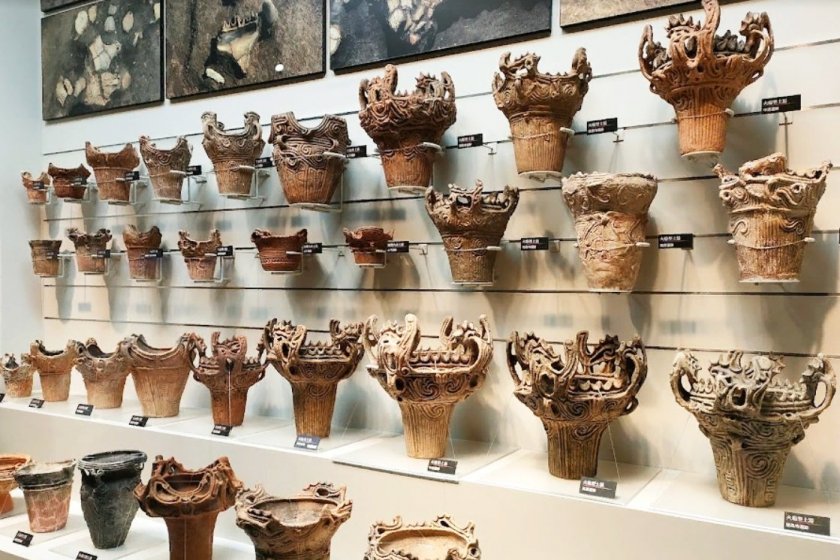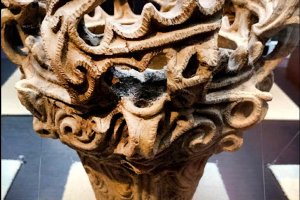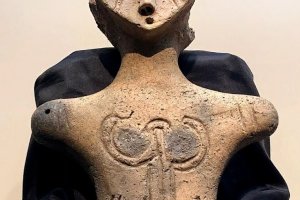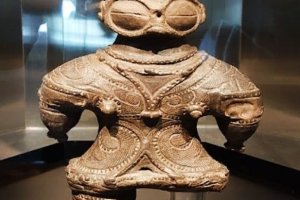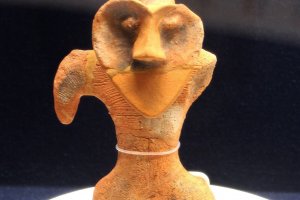The culture called 'Jomon' flourished in Japan from about 13000 BC to 300 AD, though it is difficult to establish the exact dates.
People of that period lived in small houses, about 20-30 square meters, with earthen walls and floors and a frame of wooden pillars supporting a roof made of animal skins, grass and brushwood. A family of about five or more people lived in the house with several houses located around a square forming a settlement.
Interesting finds of the Jomon period are ceramic products – large vessels and dogu figurines. Almost all of the figurines depict women with a large belly. Scientists suggest that they symbolized the feminine principle of fertility and family. Figurines were used in religious rituals of that time.
Clay (ceramic) dishes of the Jomon period were decorated with relief patterns in the form of a rope. The word ‘jomon’ itself means a ‘pattern of rope’. Complex patterns were made on the surface of the vessels by pressing a real rope into it before firing.
Styles of vessel decoration differ from region to region. In the east, vessels resembling flames were popular. Of course, only fragments have been found, but it has been possible to recreate the original appearance of the objects from them.

'Flaming' vessels are exhibited in the following museums:
1. Tokamachi Museum, Niigata Prefecture; open from 9-5pm, closed on Monday with entry JPY500.
2. Niigata Prefectural Museum of History, Nagaoka; open from 9:30-5pm, closed on Monday with entry JPY520.
3. Umataka Jomon, Nagaoka; open from 9-5pm, closed on Monday with entry JPY200.

Great dogu figurines, vessels and other objects of the Jomon period are exhibited in museums:
1. Jiyukan Jomon, Aomori, located inside the Sannai-Maruyama Site; open from 9-5pm, closed every fourth Monday with entryJPY410.
2. [Temporarily Closed till 20 April 2023] Tsugaru City Residence Jomon Museum Exhibition Calco, Aomori; open from 9-4pm, closed on Monday with entry JPY200.
3. Tohoku History Museum, Sendai; open from 9:30-5pm, closed on Monday with entry JPY460.
4. Tokyo Metropolitan Archaeological Center; open from 9:30-5pm with free entry.

